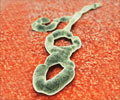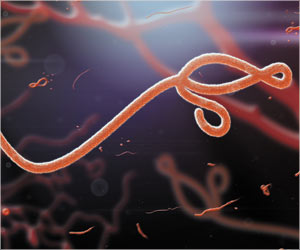
‘A new group of powerful antibodies to fight Ebola virus have been isolated from the blood of an Ebola survivor. This could guide the development of a vaccine or therapeutic against Ebola.’
Tweet it Now
Team leader Laura Walker, senior scientist at Adimab, LLC, and an alumna of TSRI's PhD program, said, "Our Science paper describes the first in-depth view into the human antibody response to Ebola virus. Within weeks of receiving a blood sample from a survivor of the 2014 Ebola outbreak, we were able to isolate and characterize over 300 monoclonal antibodies that reacted with the Ebola virus surface glycoprotein." Despite a limited library of anti-Ebola options, researchers have had some success in designing antibody 'cocktails' that target several weak points at once. One treatment in development, Mapp Biopharmaceutical Inc.'s ZMapp™, is a cocktail of three mouse antibodies modified to resemble human antibodies. This treatment was successful in primate trials and used as an experimental human treatment in the 2014 outbreak.
With ZMapp showing promise, researchers are searching for additional antibodies to fight Ebola.
Associate Professor Andrew Ward said, "These types of antibodies could be developed into different types of antibody cocktails or therapeutics, in addition to advancing vaccine design."
The new study took advantage of a recently launched single B cell isolation platform from Adimab, which researchers used to quickly find more than 300 antibodies that reacted with the Ebola virus surface glycoprotein - the viral structure that fuses with host cells.
Advertisement
The study's first author Zachary Bornholdt, an assistant professor in the Ollmann Saphire lab at the time of the study and current associate director of antibody discovery at Mapp Biopharmaceutical, said, "That's where our expertise came into play."
Advertisement
Because these are human antibodies, not modified mouse antibodies, researchers potentially could quickly use them to design a treatment. Furthermore, with these new antibodies available, researchers might be able to design secondary treatments in case the Ebola virus mutates to escape other treatments.
Next, the researchers used an imaging technique, called electron microscopy, to investigate exactly where the antibodies were binding with Ebola virus. The imaging, led by the Ward lab at TSRI, revealed a previously unknown Achilles heel on the virus: a spot at the base of the Ebola virus surface glycoprotein.
While Ebola virus mutates rapidly, this site is part of the virus's larger machinery and tends to stay the same. This means targeting this spot could neutralize many strains of Ebola.
To encourage further studies, the researchers have made the genetic sequences of these antibodies available to the research community.
The researchers believe the techniques in this study could be used to find treatments for other emerging diseases, such as Zika virus.
Bornholdt thinks of the new study as a test case. In just over a year, the combination of Adimab and TSRI methods led to the discovery of promising antibodies - and future experiments should move even more quickly now that researchers have experience with these tools.
Bornholdt said, "With other outbreaks, we could take blood samples from the first wave of survivors and potentially produce a therapeutic rapidly. That's the long-term goal."
Source-Eurekalert












